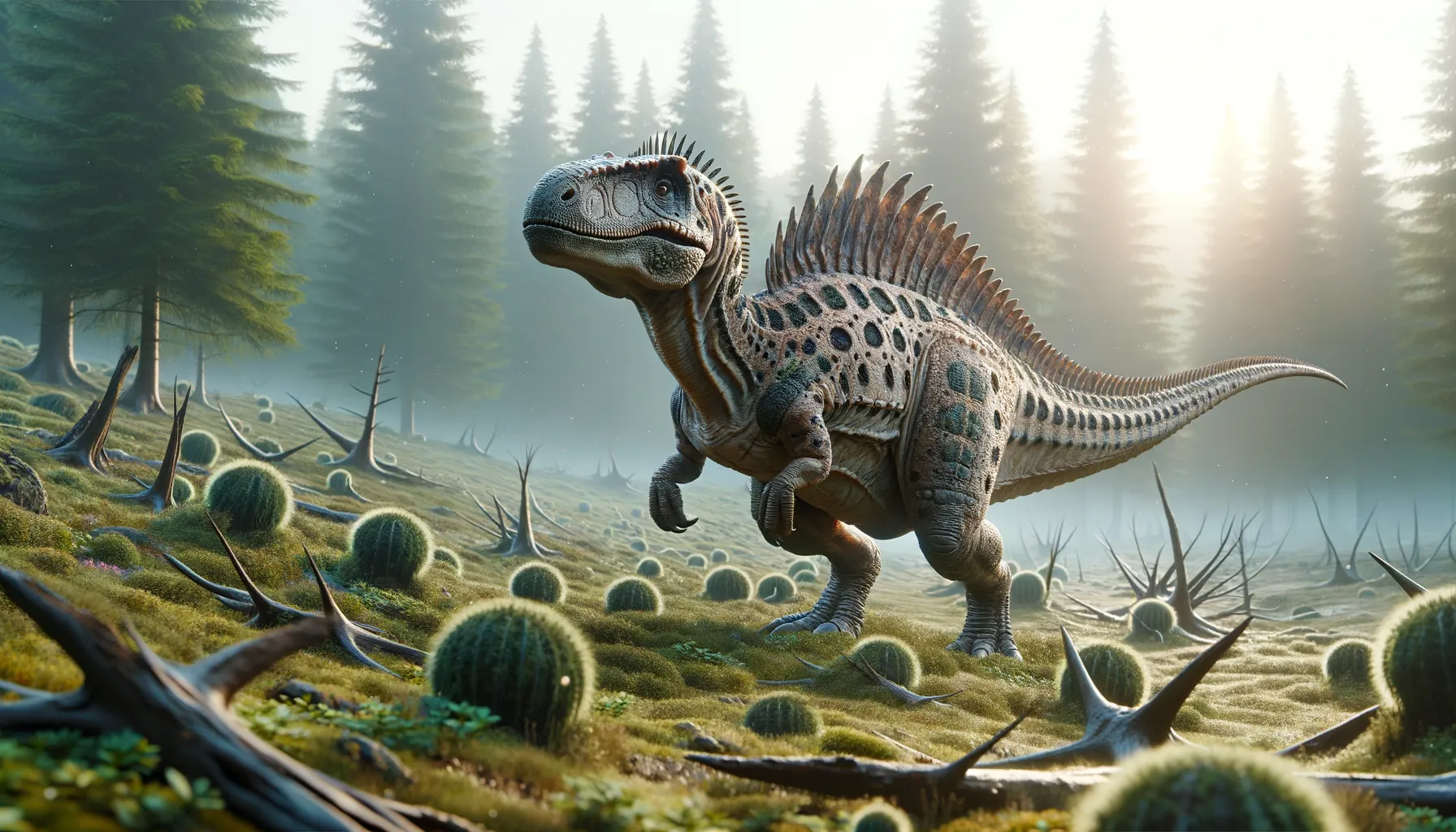
Tianchisaurus
Armored guardian of ancient times!
Period
Jurassic
Length
Measured about 4 meters in length.
Height
Stood approximately 1 meter tall.
Weight
An average weight of around 300 kilograms.
Tianchisaurus was a small, armored dinosaur known for its distinct bony plates and tail spikes, providing protection against predators. Living in the Jurassic period, it shared its environment with various other dinosaurs and faced numerous environmental challenges. Despite its defensive build, Tianchisaurus was a herbivore, browsing on vegetation near the ground. Fossils of this intriguing creature were first unearthed in China, offering insights into the diverse prehistoric ecosystems.
Diet
Tianchisaurus was a herbivore, primarily feeding on low-lying plants and foliage. Its diet consisted of leaves, ferns, and possibly small shrubs that were easily accessible from the ground.
Hunting
As a herbivore, Tianchisaurus did not hunt. Instead, it foraged for plants and relied on its armored body to deter predators and survive in its prehistoric habitat.
Environmental challenges
Tianchisaurus faced the challenge of surviving alongside formidable predators within its ecosystem. To evade danger, it relied heavily on its protective armor, including spikes and bony plates. Seasonal changes might have affected the availability of its food sources, requiring adaptability in finding suitable vegetation year-round. Additionally, competition among herbivores for edible plants would have been a continuous challenge.
Speed
Slow-moving due to its bulky build.
Lifespan
Estimated to live for several decades.
First discovery
First discovered in China in the 1970s.
Fun Facts
- Tianchisaurus was a dinosaur that lived during the Middle Jurassic period, around 160 million years ago.
- It was discovered in the Xinjiang region of China, which is known for its rich fossil deposits.
- Tianchisaurus is named after the Chinese words 'Tianchi', referring to a local reservoir, and 'saurus', meaning lizard.
- The dinosaur belonged to a group known as ankylosaurs, which are famous for their armored bodies.
- Unlike some of its larger armored relatives, Tianchisaurus was relatively small, about the size of a human adult.
- Tianchisaurus might have used its armor as protection against predators or even in battles with other dinosaurs.
- This dinosaur's bones were first described in 1993, adding to our understanding of ankylosaur evolution.
Growth and Development
Tianchisaurus likely experienced gradual growth, steadily increasing in size and mass over several years. As it grew, its bony plates and spikes developed, providing better protection against predators. Juveniles may have stayed close to adults for added safety until they could fend for themselves. The dinosaur's growth would have been influenced by the abundance and quality of available food sources.
Habitat
Tianchisaurus inhabited lush, green environments with plenty of vegetation. It preferred regions with a mix of open areas and forested patches, conducive for browsing. The presence of rivers or water bodies would have been essential for sustaining both the dinosaur and the plant life it fed on. Its habitat was shared with a variety of other prehistoric species, creating a dynamic ecosystem.
Interaction with other species
Tianchisaurus likely coexisted with other herbivorous and carnivorous dinosaurs within its habitat. Its primary interaction would have involved avoiding predators, using its armor for defense. It may have engaged in competition with other herbivores for food resources. Symbiotic relationships could have existed with other small species, like birds, enhancing its survival chances.
Natural lifespan
Tianchisaurus could naturally live for several decades.
Reproduction
Tianchisaurus, like most dinosaurs, likely reproduced by laying eggs in nests within secure, hidden places. Nesting sites would have been chosen for their protection from predators and environmental conditions. Parental care might have been moderate, with adults possibly guarding the eggs until they hatched. Youngsters would have depended on their parents or group for initial protection until they developed enough armor.
Social behaviour
Tianchisaurus might have lived in small groups for increased security against predators. Group living would have provided collective vigilance, alerting each other to lurking dangers. Cooperation among individual dinosaurs could have played a part in their survival strategies. Social interaction could also aid in learning for young dinosaurs as they matured.
Fossil locations
Tianchisaurus fossils were primarily found in China, indicating its geographic range. The discovery of these fossils provides crucial information on the dinosaur's anatomy and lifestyle. These fossil sites contribute to understanding the broader ecosystem dynamics during the Jurassic period. Further discoveries could help uncover more about its distribution and evolutionary adaptations.
